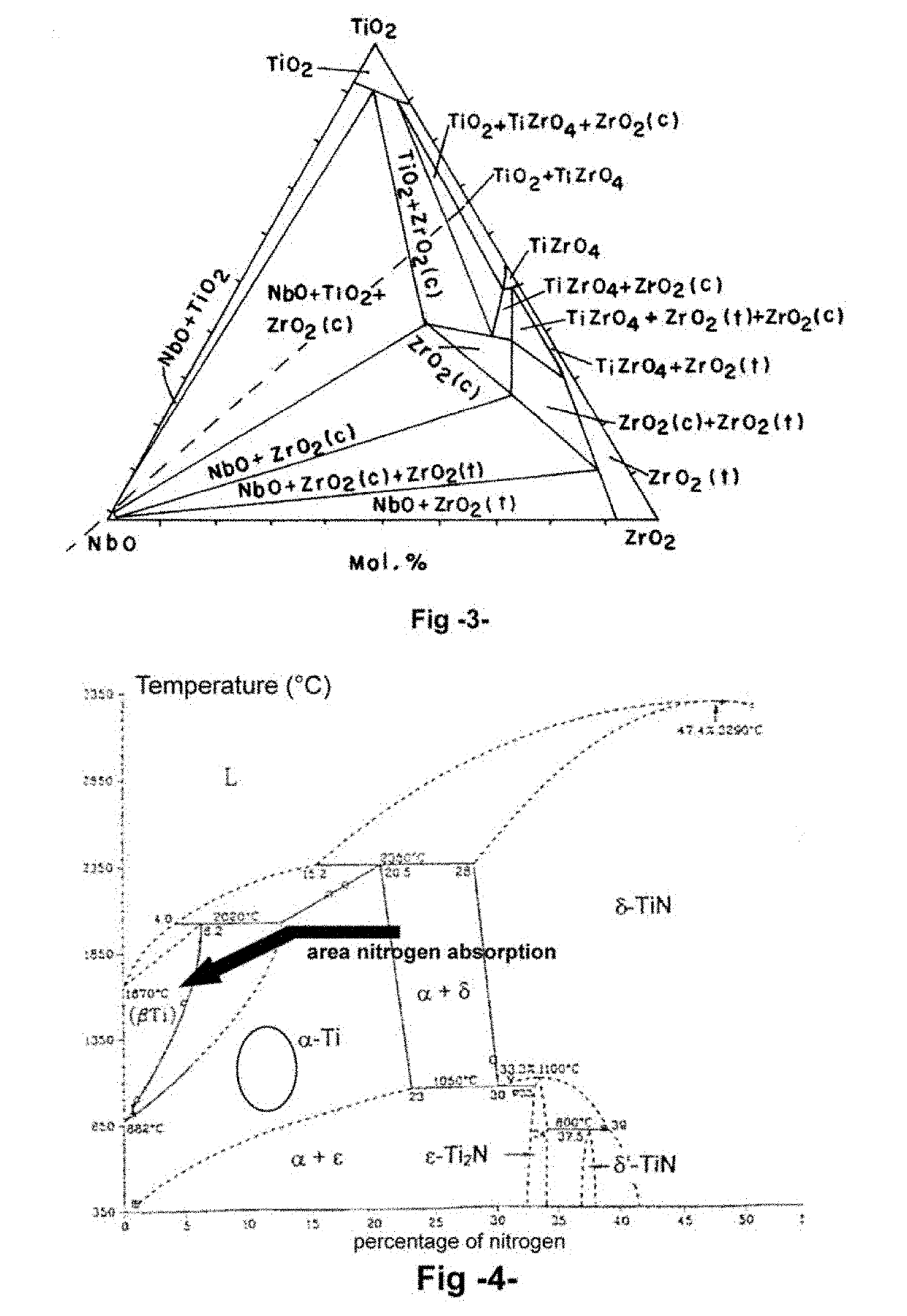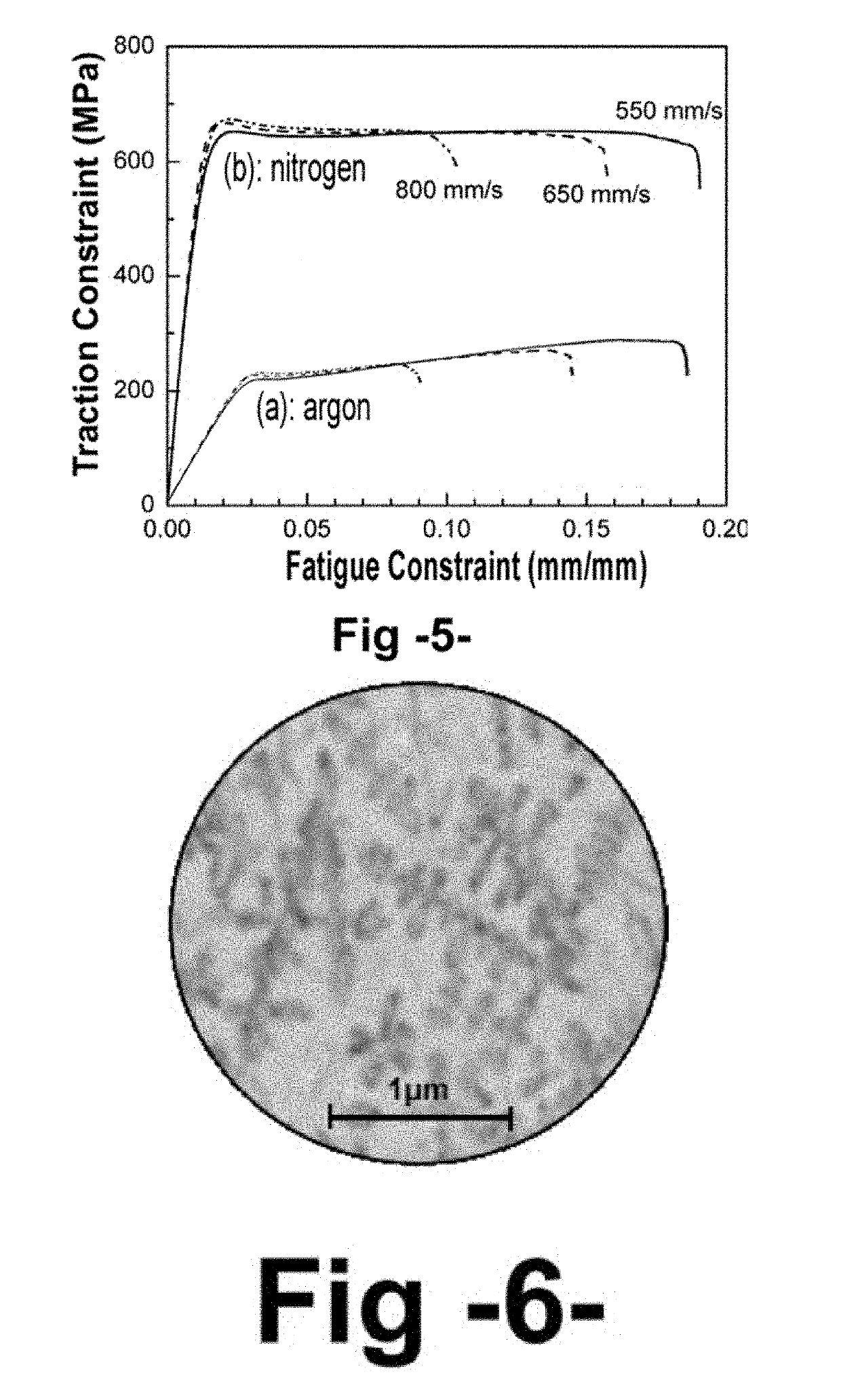Process for producing a beta-alloy Titanium Niobium Zirconium (TNZ) with a very low modulus of elasticity for biomedical applications and its embodiment by additive manufacturing.
a technology of beta-alloy titanium niobium zirconium and biomedical applications, which is applied in the field of titanium alloys with low modulus of elasticity, can solve the problems of increased cytotoxicity of vanadium and aluminum contained in the ti-6al -4v alloy, increased risk of respiratory system irritation, and increased risk of aluminum absorption
- Summary
- Abstract
- Description
- Claims
- Application Information
AI Technical Summary
Benefits of technology
Problems solved by technology
Method used
Image
Examples
Embodiment Construction
[0082]The present invention aims to create a material that is not harmful to the human body, having a modulus of elastic close to the bone and having a high resistance to fatigue.
[0083]For this purpose, the invention generally relates to a process for shaping an alloy comprising mainly Ti in the β or near β phase, comprising the steps of:
[0084]Preparation of a homogeneous mixture of particle powder comprising micrometric particles of pure Ti and nanoscale particles of at least one additional element or compound promoting the beta phase of the Ti during its cooling from its phase transition temperature α / β.
[0085]exposing said particle powder mixture to a focused energy source which selectively heats at least a portion of a bed of said homogeneous powder mixture at a temperature between 850 and 1850° C.
[0086]cooling of the part having undergone this exposure with preservation of the beta phase of Ti.
[0087]So that the additional element (s) can promote the conservation of the beta phas...
PUM
| Property | Measurement | Unit |
|---|---|---|
| Fraction | aaaaa | aaaaa |
| Fraction | aaaaa | aaaaa |
| Fraction | aaaaa | aaaaa |
Abstract
Description
Claims
Application Information
 Login to View More
Login to View More - R&D
- Intellectual Property
- Life Sciences
- Materials
- Tech Scout
- Unparalleled Data Quality
- Higher Quality Content
- 60% Fewer Hallucinations
Browse by: Latest US Patents, China's latest patents, Technical Efficacy Thesaurus, Application Domain, Technology Topic, Popular Technical Reports.
© 2025 PatSnap. All rights reserved.Legal|Privacy policy|Modern Slavery Act Transparency Statement|Sitemap|About US| Contact US: help@patsnap.com



